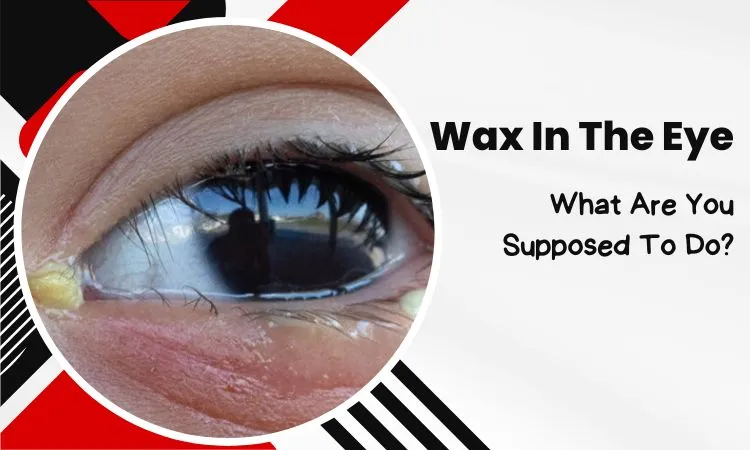Whether it’s eye wax, ear wax, or even candle wax, these can cause irritation, blurred vision, and discomfort.
So, why do you get wax in the eye and what should you do?
Using cosmetics, and eye products, or getting dirt or debris in the eye can cause more waxes than normal. Whenever you get wax in your eyes, like candle wax or ear wax, avoid rubbing or touching them. If it’s ear wax or candle wax, you need to wash off your eyes with water. In case of excessive eye wax or pain after cleaning them, it’s better to directly see a doctor.
Learn about different types of waxes and what to do if you get them in your eyes.
Different Types Of Wax In The Eye
You may not know it, but there are multiple types of waxes that you can get in your eyes. Depending on the wax, the cure will be different.
- Eye Wax, also known as “rheum,” is a natural substance produced by the eyes. It consists of a combination of mucus, oil, skin cells, dust, or even pus.
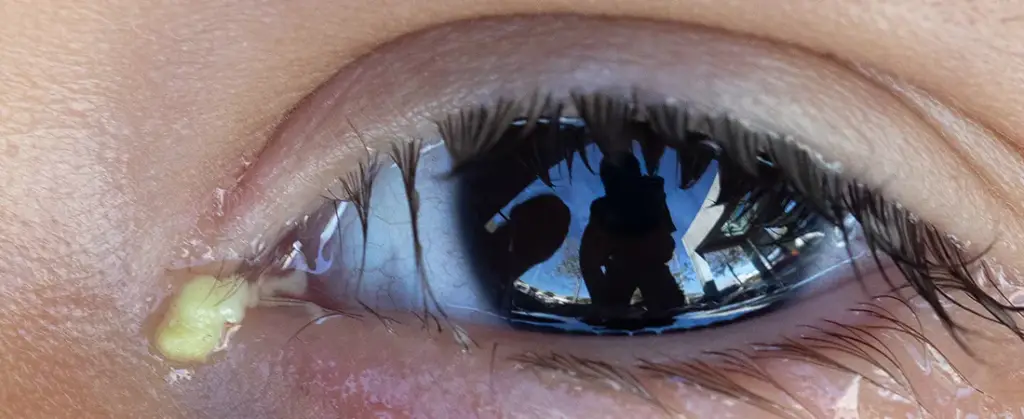
- Ear Wax: a substance produced by glands in the ear canal. Its primary function is to protect the ear by trapping dust, dirt, and other foreign particles. But too much ear wax will block your ears. In that case, you will need an ear wax removal specialist.

- Candle Wax: the solid material used to make candles. It is typically made from different types of wax, such as paraffin wax, beeswax, soy wax, or palm wax. These are normally harmless, but some people think some types of candle wax can be toxic. Better Homes and Gardens candles may be toxic.

Reasons If You Got Wax In The Eye?
Eye waxes are common and normally harmless. But if there is excessive wax or discharge that is causing you discomfort, you have a problem.
Eye waxes can occur for many reasons. Here are some common causes of eye wax–
Blepharitis:
Blepharitis happens when the oil glands in your eyelids get blocked. It can be caused by mucus, dirt, or debris, leading to irritation, inflation, redness, and discharge.
Symptoms:
- Clear or white discharge
- Itchy and red eyelids
- Blurry vision.
Treatment:
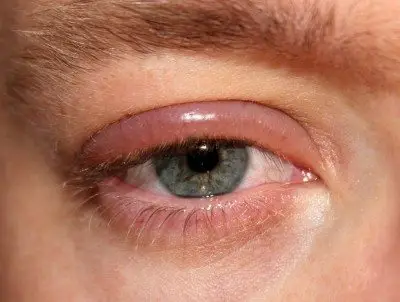
To treat blepharitis, keeping your eyelids clean is key. Wash your eyelids gently with diluted baby shampoo, warm compresses, or artificial tears. Remember, it’s important to rinse properly after using any cleansing agents.
Conjunctivitis:
Conjunctivitis is an inflammation of the conjunctiva, a clear layer covering the white part of the eye. It can be caused by a virus, bacteria, or an allergic reaction.
Symptoms:
- Redness in the white part of the eye,
- Clear, mucus-like, green, or yellow discharge,
- Blurry vision,
- Swollen eyelids,
- Itching, and
- Excessive tearing.
The most common type of conjunctivitis is viral, often accompanied by other cold-like symptoms. It typically starts in one eye and can spread to the other within a few days. Viral conjunctivitis lasts about 7 to 10 days and is contagious during this time.
Bacterial conjunctivitis is caused by excessive bacteria growth on the conjunctiva. It can result from common facial bacteria coming into contact with the eye.
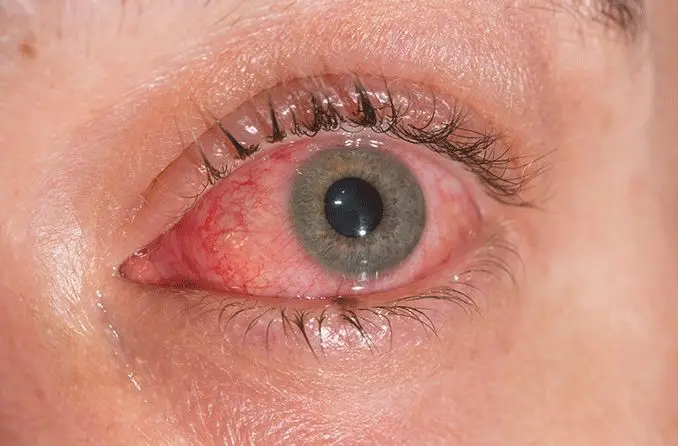
Treatment:
Treatment for conjunctivitis depends on the underlying cause. Antibiotic drops are not effective against viral conjunctivitis. Instead, treatment involves frequent handwashing, limiting eye-touching, and using artificial tears to keep the eye surface moist.
Bacterial conjunctivitis can be treated with antibiotic eye drops or ointments. Oral antibiotics may be necessary for children.
Blocked Tear Duct:
Blocked tear ducts can cause bothersome symptoms. Despite being common in newborns, adults can also experience them due to age, infection, trauma, or growth.
Symptoms:
- Watery or bloody discharge
- Blurry vision, and swelling in the corner of the eye.
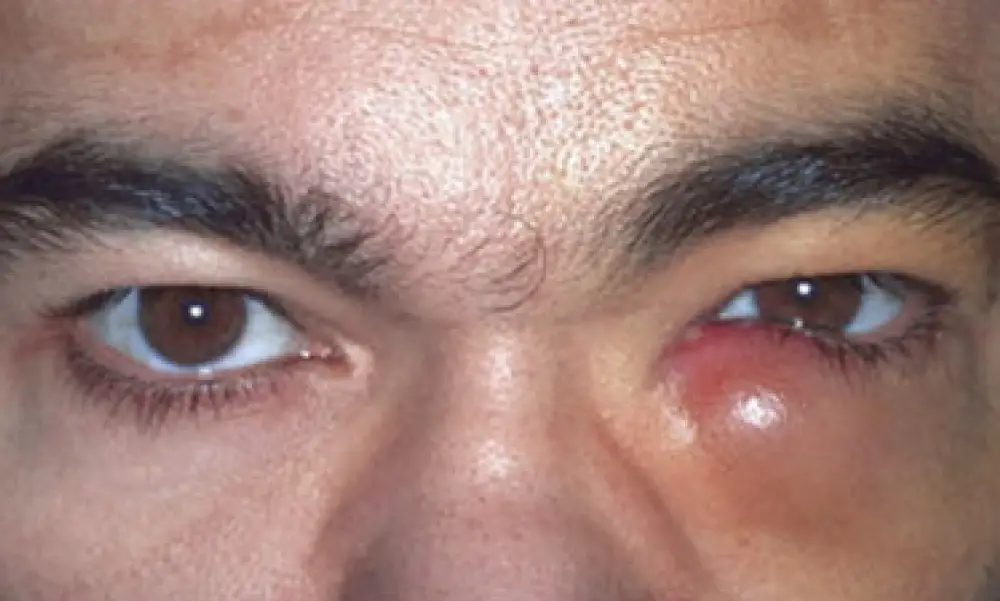
Treatment:
Diagnosis involves a physical exam and tear drainage test. Treatment options include gentle massage, dilation, or surgery for severe cases.
Sexually Transmitted Infections:
Sexually transmitted infections (STIs) can sometimes affect the eyes. Two common STIs that can lead to eye problems are gonorrhea and chlamydia.
Gonorrhea can cause severe eye inflammation and corneal infection if infected fluids come into contact with the eye. Similarly, chlamydia can cause conjunctivitis.
Symptoms:
- A large amount of oozing
- Thick discharge, often green or yellow
- Blurry vision
- Eye pain
- Burning or pain in the front of the eye
- Eyelid swelling
- The feeling of something being in your eye
Treatment:
Both infections can be treated with oral antibiotics and eye drops prescribed by a healthcare professional.
What To Do If You Got Ear Wax In The Eye?
It can be quite hard to get accidentally ear wax in your eye. But if somehow that happens, you do not need to worry. That’s because ear wax in the eye is not harmful. Regardless, here is what you should do-
- Avoid rubbing: Refrain from rubbing or touching your eye, as this can further irritate the eye and potentially introduce more foreign particles.
- Rinse with clean water: Flush your eye gently with clean water or an eyewash solution. Tilt your head to the side and allow the water to flow over your eye. It’ll help to wash away the ear wax. You may need to repeat this process a few times.
- Blink and rinse: Blink your eye repeatedly while rinsing to help dislodge any remaining wax particles. This can also stimulate tear production, which can aid in flushing out the wax.
Also, ear wax melts at a certain temperature, so getting it off should not be a problem.
What To Do If You Get Candle Wax In The Eye?
Getting candle wax in your eyes can be painful and irritating, especially if it is hot. Follow the eye-cleaning process mentioned above ASAP when this happens.
Now, the next course of action will depend on whether or not you feel pain in your eye.
If There Is Pain:
If there is pain, redness, and blurry vision in your eye, you need to seek professional help immediately. Candle wax in the eye is harmless unless it hits the cornea. The pain indicates that it hit your cornea, which is not good for your eye.
So, get to the nearby hospital emergency as fast as you can. In the meantime, avoid rubbing or touching your eye. This can make things worse than it already is.
If There Is No Pain:
If there is no pain in your eye after cleaning the wax, then it means no problem. No pain indicates that it could not reach your cornea. Still, avoid rubbing your eye for some time and you should be fine.
How To Avoid Getting Wax In Your Eye?
Eyes are more precious than you realize. That’s why you need to be more careful and protective about your eyes. Here are some tips to avoid getting wax in your eyes-
- Be cautious during grooming: Be careful not to accidentally transfer wax or makeup into your eyes when cleaning your ears or removing makeup. Avoid using cotton swabs or other objects near your eyes or ear canals.
- Wash hands thoroughly: Before touching your eyes or face, make sure to wash your hands thoroughly. This can help prevent the transfer of wax or other substances to your eyes.
- Use proper techniques: When cleaning your ears, follow safe and recommended methods like using a warm washcloth or ear drops to soften earwax. Avoid inserting any objects into your ear canal, as this can push the wax deeper or cause injury.
- Trim candle wicks: Before lighting candles, ensure the wicks are trimmed to an appropriate length (around ¼ inch). This can help prevent excessive wax splattering and reduce the risk of it reaching your eyes.
- Keep candles at a safe distance: When using candles, place them in stable holders and keep them away from your face. Be careful not to lean over candles or position them in a way that can splash wax into your eyes.
- Use protective eyewear: Wear safety glasses or goggles if you work in an environment where wax or other substances may be present.
Frequently Asked Questions (FAQs):
Should I Remove Eye Mucus?
No, you do not need to actively remove eye mucus or discharge on your own. Attempting to remove eye mucus by squeezing or rubbing your eyes can potentially lead to a skin infection. If you experience persistent or excessive eye mucus, you should consult an eye doctor.
How Long Does It Take for Eye Mucus to Go Away?
With proper treatment, the eye mucus should go away in about three days. But, the redness in your eyes might hang around a bit longer. It can take up to a week for those red eyes to fully recover and return to normal.
Is Candle Wax Toxic If Ingested?
No, candle wax is not poisonous if ingested. But swallowing a large amount of candle wax can potentially cause a blockage in the intestines. So, it’s best to avoid intentionally consuming candle wax.
Conclusion
Dealing with wax in the eye can be uncomfortable and potentially problematic.
Whether it’s eye wax, ear wax, or candle wax, it’s crucial to handle these situations with care. Seeking medical attention, avoiding rubbing, and practicing preventive measures can help prevent complications and ensure healthy, clear eyes.

